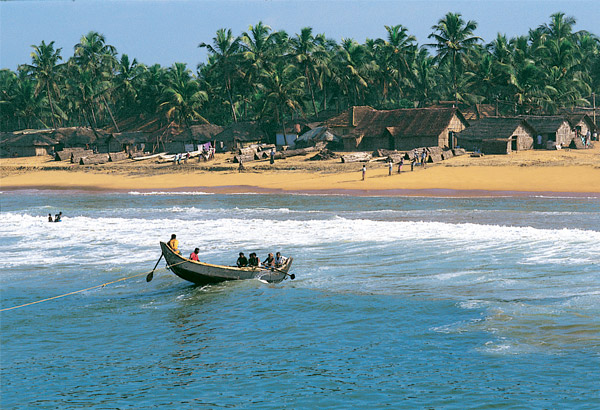Calicut Travel Guide:

Introduction
Kozhikode (Malayalam: ??????????)[ko??ik?o??]( listen), also known as Calicut, is a city in the northern part of the state of Kerala in southern India. Kozhikode is the headquarters of the Kozhikode district.
Kozhikode has a population of 436,556 as per 2001 census, with an extended metropolitan population of about 0.9 million, making it the third largest urban agglomeration and the third largest city in Kerala.
During Classical antiquity and the Middle Ages, Calicut was dubbed the "City of Spices" for its role as the major trading point of eastern spices. Kozhikode was once the capital of an independent kingdom of the same name and later of the erstwhile Malabar District.
According to data compiled by economics research firm Indicus Analytics on residences, earnings and investments, Kozhikode ranked as the second best city in India to reside in. Indicus considered six parameters – health, education, environment, safety, public facilities and entertainment. Kozhikode was ranked eleventh among Tier-II Indian cities in job creation by a study conducted by ASSOCHAM in 2007
History
The city of Kozhikode was founded on a marshy tract along the Arabian coast in 1034 AD. Following the collapse of the powerful Chera Kingdom, several of its chieftains proclaimed independence. One of the more powerful of these chieftains was the Eradis of Nediyirippu. The city was established by the Eradis after a prolonged battle with the Porlathiris of Polanad. Access to the sea helped the Eradi chief, who was by now called the Saamoothiri (Zamorin), develop the city into one of the major trading centres of the Eastern world abounding in a wide variety of goods like pepper, textiles, lac, ginger, cinnamon, myrobalans, and zedoary. Vessels of various sizes from around the world, like the junk, arrived on the shores of Calicut. About two centuries later, a Portuguese naval fleet arrived in Calicut in May 1498 led by Vasco da Gama, initiating a new chapter in the European interactions with this region. The Portuguese failed to secure any valuable treaty with the Zamorin and came into direct conflict with the Arab merchants and the Zamorin himself. A Dutch fleet led by Steven van der Hagen arrived in Calicut in November 1604 and marked the beginning of the Dutch presence on the Indian coast. The Dutch had a more favourable relation with the Calicut and were provided greater participation in the ongoing trade.The British reached Calicut in 1615, led by Captain William Keeling.
By 1663, the power of the Portuguese dwindled, shifting their interests to thriving Goa. The Dutch saw their final days in 1795 when the British forces attacked the Dutch at Cochin as part of the larger French Revolutionary Wars. A brief period of attacks emerged from the Mysore state under Hyder Ali and Tipu Sultan from February 1766 as they desperately sought to capture the flourishing trading ports of Malabar for strategic interests. The Mysorean interlude ended in 1792 following their defeat by British forces. Kozhikode remained the headquarters of the Malabar district under Madras state. After Indian Independence in 1947, Madras Presidency became the Madras State. In 1956 when the Indian states were reorganized along linguistic lines, Malabar District was combined with the state of Travancore-Cochin to form the new state of Kerala on 1 November 1956. Malabar District was split into the districts of Kannur, Kozhikode, and Palakkad on 1 January 1957.
Geography
The city of Kozhikode is located 410 kilometres (255 mi) north of the state capital Thiruvananthapuram. Kozhikode is located at approx. 11°15'N 75°46'E? / ?11.25°N 75.77°E? / 11.25; 75.77. It has an elevation of 1 metre (3 ft)along the coast with the city's eastern edges rising to at least 15 metre, with a sandy coastal belt and a lateritic midland. The city has a 15 km long shore line and small hills dot the terrain in the eastern and central regions. Kozhikode is one the five Municipal Corporations in Kerala. It became a Municipality on 3 July 1866. The regions' population was then 36,602 inhabiting an area of 28.48 km². It was later made a Municipal Corporation in 1962. Currently, the Corporation is spread over an area of 84.232 km². To the city's west is the Arabian Sea and from apprx. 60 km to east rises the Sahyadri Mountains.
Climate
Kozhikode features a tropical monsoon climate under the Koppen climate classification. The city has a highly humid tropical climate with high temperatures recorded from March to May. A brief spell of pre-monsoon Mango showers hits the city sometime during April. However, the primary source of rain is the South-west monsoon that sets in the first week of June and continues till September. The city also receives significant precipitation from the North-East Monsoon that sets in from the second half of October through November. The average annual rainfall is 3,266 mm. The weather is ideal towards the end of the year from December and January until March when the skies are clear and the air is crisp. Winters are seldom cold. According to Climate Charts, 12 locations in India are cooler, 26 are warmer, 37 are dryer and only 1 is wetter[15] than Kozhikode. The highest temperature recorded was 39.4 °C in March 1975. The lowest was 14 °C recorded on 26 December 1975.